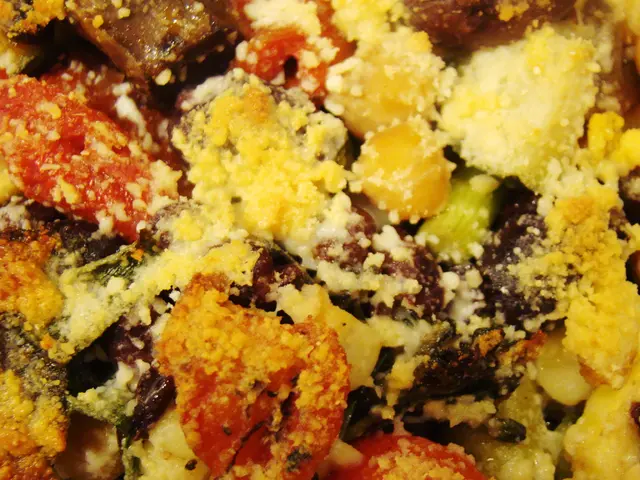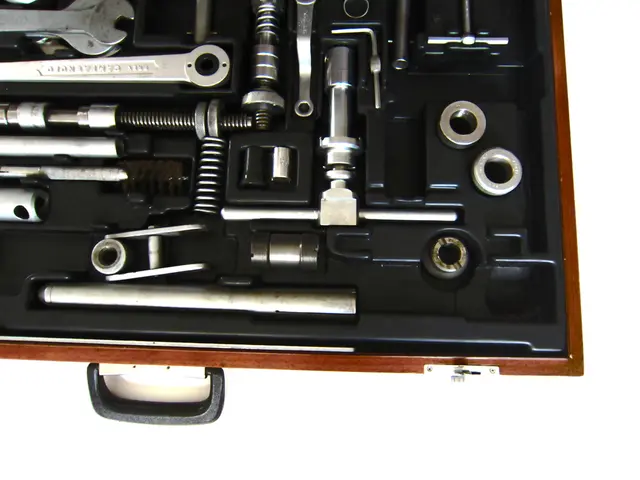Common Salt Misconceptions Unraveled: Separating Fact from Fiction
Salt: Enough's Enough, But Not Too Little
Ah, salt. It's a tantalizing taste for your taste buds, but it's often dragged through the mud health-wise. Is it truly as villainous as they say? And are some salts really the heroes here? If you ain't got high blood pressure, does that mean you can chow down on the stuff without a care?
While lessening your daily salt consumption is generally a smart move - it can aid in preventing or reducing high blood pressure, a significant contributor to heart disease and stroke - that doesn't imply all salt is evil.
Here, we debunk some of the most common salt myths once and for all.
Myth #1: Salt and sodium are the same thing
Sodium is a mineral found in salt and other natural substances. Table salt contains approximately 40% sodium. According to the American Heart Association, one teaspoon of table salt contains 2300mg of sodium - that's the maximum amount of sodium you should be consuming daily, and it's more than you actually require (more on that in a minute). The organization advises no more than 1500mg of sodium per day (less than 3/4 of a teaspoon of salt) for people with or at risk of high blood pressure.
Myth #2: Salt has no place in a healthy diet
Eating salt is fine as long as you keep your intake in check. It's easy to overindulge because numerous processed foods contain excessive amounts of added salt. "Sodium is an essential nutrient that aids in regulating our blood pressure and helps our nerves and muscles function properly," says Whitney Thomas, a registered dietitian nutritionist with UW Medicine Primary Care. "However, we only need around 500mg of sodium a day for our bodies to function correctly."
Most people (at least in the United States) are consuming considerably more than that - often around 3500mg per day, Thomas says.
Myth #3: If you don't add salt to your food, you aren't eating much salt
Not only is added salt found in practically every prepared or processed food - even items typically considered healthy, like whole wheat bread - but small amounts of sodium can be found in various whole foods, like meats, veggies, and even fruits. Added sodium can even be found in some prescription and over-the-counter medications, sometimes in higher amounts than you'd expect. Thomas advises asking your pharmacist about the medications you take, as they might be able to recommend low-sodium alternatives.
Myth #4: Fancy salt, like sea salt or Himalayan pink salt, is healthier
Sea salt comes from evaporated seawater, and Himalayan salt is mined in Pakistan. Both are often marketed as healthier alternatives to regular table salt due to their coarser texture and additional minerals, but that's largely untrue. "They're less processed and have larger crystals, which have more surface area for your tongue to detect, so you can use less," Thomas says. However, while there's a little less sodium in a teaspoon of sea salt and Himalayan salt - due to the crystal size - it ultimately comes down to this: salt is salt, no matter how you shake it.
One thing to note is that sea salt and Himalayan salt are both less processed than table salt. In general, less-processed foods tend to be healthier than ultra-processed ones. However, unrefined sea salt may pose its own health issues: studies have found traces of heavy metals and microplastics, both of which can be found in the ocean, Thomas says. (Research has also found microplastics in table salt.)
Myth #5: If you don't have high blood pressure, you don't need to watch your salt intake
This is one of the most common myths Thomas hears from patients. While it's true that you might not have to be as cautious as someone with high blood pressure, that doesn't mean you should ignore your sodium intake entirely. Overeating sodium could put you at risk for developing high blood pressure or lead to other health problems in the future.
Eating fewer ultra-processed foods, eating smaller portion sizes (especially with takeout), and asking for sauce on the side are all ways Thomas recommends monitoring your sodium intake.
Myth #6: You should eat table salt to prevent iodine deficiency
Table salt has iodine added to it, whereas sea salt and Himalayan salt do not. Is that a reason to stick to table salt? Iodine deficiency used to be a problem in the U.S. - and it still exists in other countries - hence why iodine is added to table salt. But most Americans now get enough iodine in their diets by eating foods like dairy products, eggs, and fish, so we no longer need to worry about iodine deficiency, Thomas says.
Myth #7: Low-sodium food isn't as tasty
Yes, salt provides a lot of flavor to food, but it is not the only way to make food delicious. Spices are an excellent way to add flavor to your dishes without adding additional sodium. "I often tell people, if you get an herb mixture, mix that with olive oil and lemon juice, and you can use that as a marinade that doesn't contain any sodium," Thomas says. She also suggests a tip: adding lemon or lime juice to a recipe can give it that delicious bite that salt would, without requiring any salt.
- While reducing daily salt consumption can aid in preventing or reducing high blood pressure, a significant contributor to heart disease and stroke, this does not imply all salt is vilified.
- Eating salt is fine as long as you keep your intake in check, as sodium is an essential nutrient that regulates our blood pressure and helps our nerves and muscles function properly.
- Not only is added salt found in practically every prepared or processed food, but small amounts of sodium can be found in various whole foods, like meats, veggies, and even fruits.
- Contrary to popular belief, fancy salts like sea salt or Himalayan pink salt are not healthier, as they contain similar amounts of sodium to regular table salt; their coarser texture may only lead to using less, not necessarily offering additional health benefits.








